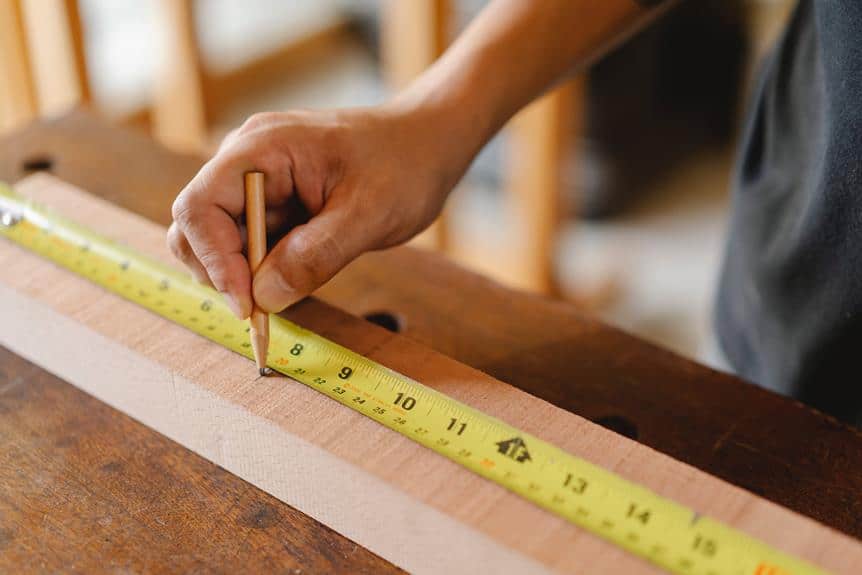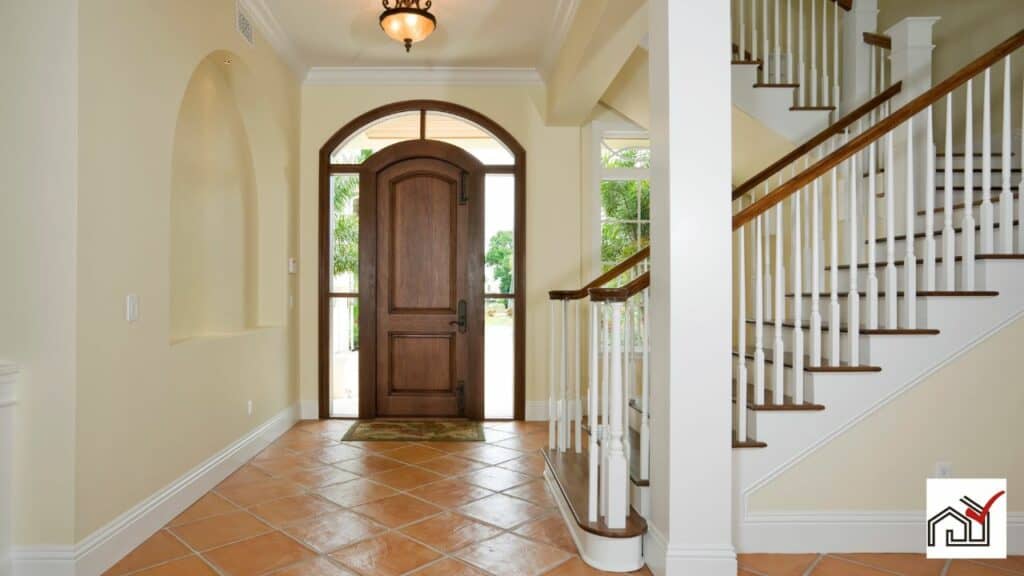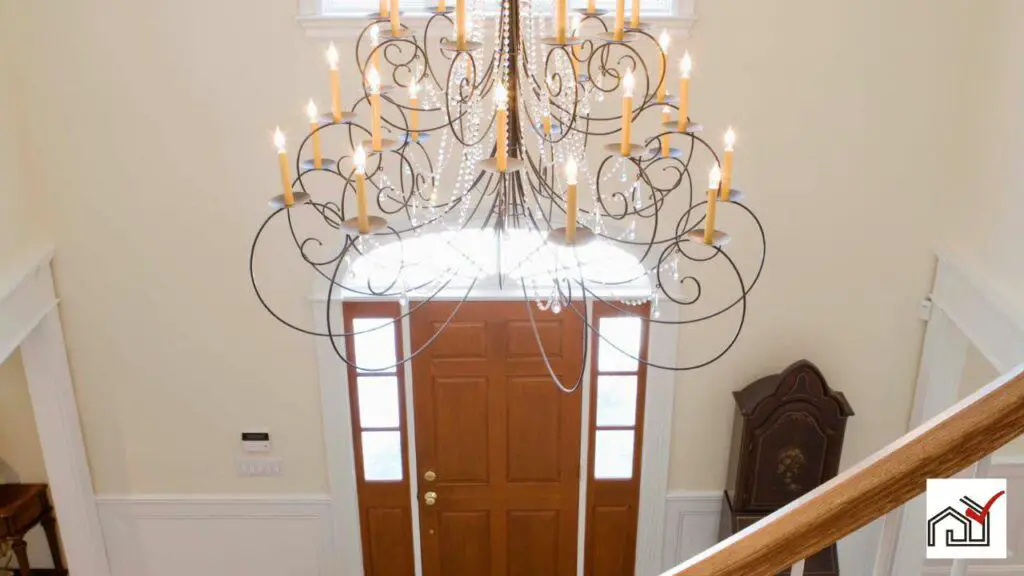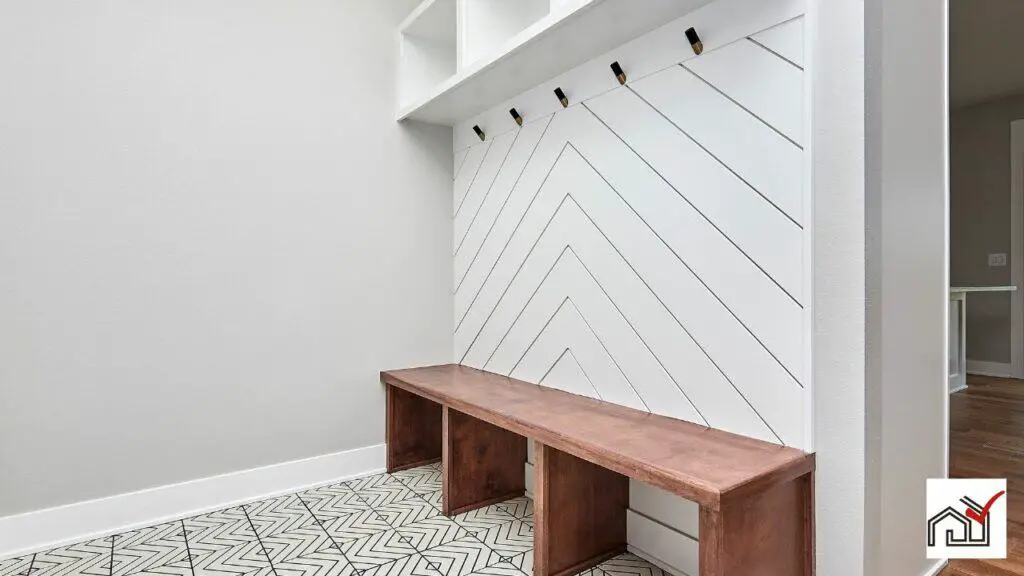An entryway should be 2% to 4% of the home's total square footage. This size allows enough space for movement and entrance essentials. The size may vary based on the occupants' needs, such as storage or mobility aids, and should match the home's design for a smooth transition into living areas.
Proper planning of the entryway size is important.
Entryway Size Essentials
An entryway should be at least 36 inches wide, 80 inches tall, and 48 inches deep. These dimensions are important for a functional and inviting space, allowing for the door to open fully. The size of the foyer should also match the scale of the house, typically taking up 2 to 4 percent of the house's total square footage to ensure it feels neither too large nor too small.
A standard entrance door size is practical for daily use and moving large items. For better movement, a foyer can be wider, up to 5 feet, and for a more impressive look, 7 or 8 feet in width is beneficial. For storage, a coat closet should be at least 24 inches deep and 36 inches wide.
Following these size recommendations ensures the entryway is both functional and aesthetically pleasing, providing a smooth transition into the home's living areas.
Functionality Vs. Aesthetics
Choosing the right size for a home's entryway involves weighing both practicality and visual appeal. An entryway should be large enough to make a visual statement but not so large that it takes up excessive space or feels unwelcoming.
Incorporating elements like coat closets, doors, and windows requires careful thought to balance their practical use with the overall look of the area. A coat closet must provide storage without disrupting the entryway's style. The front door should be secure and complement the house's design, while windows should let in light but also respect privacy.
The entryway's size should match the house's style and size. While a larger entrance can be visually impressive, it should not sacrifice usability. The needs of the occupants should guide whether a spacious area for greeting guests is necessary or a smaller, more efficient space suffices.
Ideal Dimensions Guide
Ideal Dimensions Guide for Entryways
The recommended size for an entryway is about 2 to 4 percent of the home's total square footage to maintain balance with the rest of the house. A typical entryway width is 5 feet, which accommodates a standard 36-inch-wide by 80-inch-tall door and allows for comfortable movement.
For smaller homes, an entryway width of approximately 5½ feet is adequate. It is also advisable to include a coat closet in the entryway design, with minimum dimensions of 24 inches in depth and 36 inches in width for sufficient storage and ease of access.
This guide helps homeowners ensure their entryway is practical, well-proportioned, and welcoming, contributing to the overall aesthetic and functionality of the home.
Maximizing Small Spaces
To make a small entryway more functional and welcoming, use design elements that are both practical and aesthetically pleasing. Use light and mirrors to create a sense of space; strategically placed windows and mirrors can make the area feel larger. Choose white or light colors for walls to reflect light and give the illusion of a bigger room.
Bookcases or shelves can act as room dividers in a small entryway, creating a separate foyer without structural changes. This is a cost-effective way to define the space.
To avoid clutter, utilize vertical space for storage. Tall units and shelves can help keep the floor clear. Install wall-mounted hooks or racks to store coats and accessories, saving floor space.
Furnishing Large Entryways
Furnish a large entryway with versatile furniture that combines style and utility, like console tables with drawers and ample seating. Choosing pieces that match the size of the space is essential for a harmonious and inviting look. A large console table can serve as a focal point, offering both storage and display areas, while drawers help keep essentials like keys and mail organized.
In entryways with double doors, select wide coat closets that match their scale to maintain a sense of proportion and provide practical storage for coats and accessories, contributing to a tidy space.
For lighting, opt for a large, eye-catching fixture that matches the entryway's dimensions. With more space, you can choose bold designs that draw attention. Adding a rug or runner can introduce texture and guide visitors inside.
Incorporate plants or flowers to add vitality and color. A spacious entryway can house large planters or sophisticated floral arrangements, which enhance the overall feel of the area.
The goal in decorating large entryways is to balance aesthetics with functionality, ensuring each element adds to a welcoming and impressive entrance to the home.
Entryway Design Tips
An effective entryway design should be both functional and aesthetically pleasing, matching the home's architecture and meeting the needs of the residents. The entryway should be proportional to the home, typically 2 to 4 percent of the home's total square footage. It's important to ensure easy movement and flow, especially near the door. A standard door size is 36 inches wide and 80 inches high. For larger entryways, double doors can improve functionality and appearance.
Plan the entrance dimensions to handle expected traffic, considering elements like sidelights and transoms for traditional homes. Coat closets should be at least 24 inches deep and 36 inches wide for practical use. Wider closets may benefit from double doors for better access.
Designing with resale in mind means being aware of trends favoring large, welcoming entryways that boost curb appeal and make occupants and guests feel at home. The design should balance size, style harmony, and daily practicality.
Incorporating Personal Style
Incorporating personal style into an entryway involves selecting elements that reflect the homeowner's taste and lifestyle. The style and size of the entryway should create a welcoming space. A balance between elaborate and simple design allows for personal expression. Adding decorative items like vases, mirrors, or rugs can personalize the space.
Key pieces and art can be central features that show the homeowner's style. Choices range from striking sculptures to subtle paintings, and these should match the intended theme and resonate with the homeowner.
When choosing current styles and materials, consider their lasting appeal and impact on resale value, as well as how well they represent personal preferences. The entryway should be an appealing introduction to the home and remain functional.
Lighting and color are essential for setting the mood of the entryway and highlighting personal style. Proper lighting can emphasize architectural details or showcase art, and an appropriate color scheme can make the space inviting. Thoughtful integration of these elements ensures the entryway is both aesthetically pleasing and a reflection of the homeowner's individuality.





